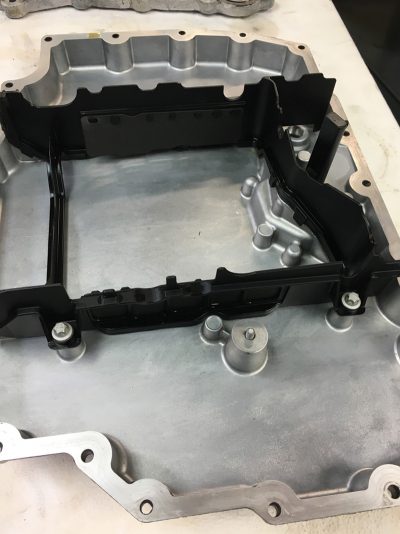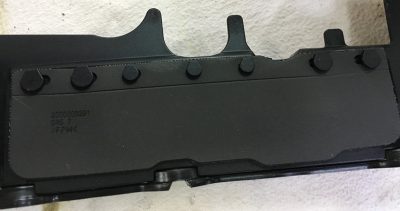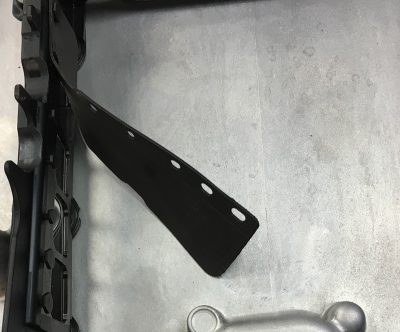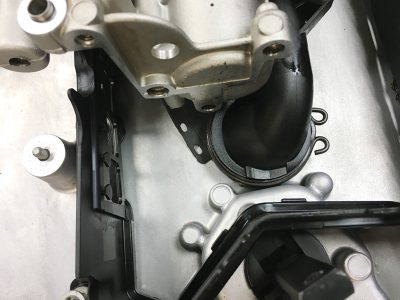The 9A1 architecture is the current engine Porsche uses in their Cayman/991/GT3 & 4 platforms. It encompasses many models but generally refers to model years 2009 through the current 2018 models, although designations now also include the 9A2.
All are six cylinder, flat or boxer opposed cylinders, and all are direct fuel injected, producing in most cases 100 horsepower and more from each liter of displacement.
The oiling or lubrication systems go beyond the “lifeblood†terminology. The oil supply not only keeps metal to metal contact in check, but cools the engines from the inside out, including via piston cooling jets.
The other function of the high pressure oil system is the hydraulic component. The engine oil pressure is used to activate different functions such as intake and exhaust camshaft control and activation, primary and secondary lifter function and control, and hydraulic tensioning of timing chains. All of these demands have different requirements for oil pressure, volume and cleanliness.
We will cover the oil pump both pressure and scavenge, return and supply and oil aeration in the next installment. For now we can look at the oil pan itself.
These engines have been very reliable, but have suffered occasional failures. As mentioned the oil pumps and controls have had many updates that will be covered in depth. However there may be a specific contributing factor or direct cause for loss of oil pressure.
Data acquisition in race cars is a wonderful technology, and can monitor just about everything from steering angles and chassis roll, pitch and yaw, to wheel speeds, throttle position, engine rpm, Lambda, and oil pressure, all at speed.
Observation of the data in several blown racing engines has shown that the oil pressure on some corners was dipping below the demand. The demand is determined in a complicated algorithm that the engine ECU uses, which then sends the request for pressure to the oil pump. Engine rpm, throttle position, and temperature are all factored in.
But the data shows that these engines were not responding to the full demand — not enough to bring a pressure warning signal to the driver. In some instances, after a shut down and restart, the problem went away for a while, but such partial oil pressure losses can lead to a catastrophic engine failure. How? You would expect to find in almost all of these cases a common denominator.
The photo (upper left) shows an undamaged, stock 9A1 lower oil pan. Inside that pan is a bulkhead or oil control baffle. It surrounds the oil pump pickup screen. It holds sufficient oil by surrounding the oil pump intake screen to prevent air from being sucked in or aerated oil being drawn into the suction side of the pressure pump.
The bulkhead consists of two strips of material that are flexible and act like a door on a hinge. These “one way “ doors, sometimes referred to as trap doors, allow oil to flow into one side while restricting the oil from leaving through the opposite side. This center “collector†is a reserve supply of the least aerated oil.
Look at it this way: in a hard right hand corner, the baffles on the left or driver’s side of the engine will close and hold the oil from escaping while the right or passenger side of the pan allows the oil to flow into, and thus refill, the center collector. This is not a new idea, but is an effective one that Porsche has done a great job of engineering.
However, and this is the good part, the photo on the bottom left of the previous page shows the collector door and how it is attached. The baffles or doors are made of flexible material that is perforated and hung onto posts shaped like a “T.â€
In engines that have failed due to lack of lubrication, observation has shown that baffles had come loose on several of these posts and were partially obstructing the oil intake. Thus as the driver negotiated a turn the loose baffle would partially obstruct the oil suction screen.
When the car was shut down the baffle could simply be released and float back to its normal position. If the baffles reach the center pickup, this can obstruct the suction side of the oil pump. And once the low oil pressure warning light comes on it is too late.
Here, in the above right photo, you can see an oil baffle that has almost completely broken free from its mounting. At this point the baffle would almost certainly completely block the oil suction inlet screen. The oil pan gets a shiny rub mark on it where the suction screen is located.
In the next photo you can see a mocked up pump and you can see how the baffle can get sucked into the screen. It happens very quickly and the resultant damage is almost always catastrophic.
Careful inspection of the baffles reveals some interesting information. Apparently the material used for the flexible doors is somehow affected by heat and, possibly by race fuels migrating into the oil supply. It is believed that the holes that the “T“ posts go throughcan swell, causing the baffles to come loose.
As a result, some shops are now recommending that all 9A1 engine customers allow them to remove the pan and examine the doors. If only one or two holes are not connected it is possible to use aircraft safety wire on each end of the baffle.
The previous part number for the bulkhead was 9A1 107 243 75. Earlier in model year 2018 the Porsche part number changed to 9A1 107 243 01. A more comprehensive repair includes replacing the bulkhead with the new, upgraded part.
Download PDF








0 Comments